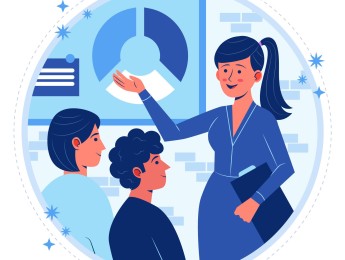Maintaining financial understanding is crucial for any business's success. Executives and other senior positions need to be able to effectively communicate the current state of finances with other employees with financial control.
A non-finance manager developing the skillset required to manage finances is extremely beneficial for a business and themselves. Comprehending the financial information provided swiftly will keep productivity moving effectively. The financial information can be processed, and immediate action can be taken, which is essential, especially in emergencies. Having all managers within an organisation be competent in reviewing and creating financial documents will ensure communication issues and clarity. It will nullify any time possibly needed to explain what is being communicated.
Monthly cash flow statements, balance sheets, and income statements are important to maintain an organisation's success. Creating documents discussing budgets for departments or projects that those in charge can understand will allow more freedom regarding production. Financial control and knowledge can aid in higher accuracy when completing tasks.
Upon completion of the course, participants will be able to:
- Explain the purpose of key financial statements.
- Interpret the financial health of an organisation.
- Define key financial terms used in organisations.
- Utilise financial information for management and elevation.
- Distinguish the difference between accounting and finance.
- Prepare and align a company’s operating budget with its strategic objectives.
- Apply capital budgeting techniques and cost-volume-profit analysis to enhance decision-making.
- Explain the rules of capital expenditure versus operation expenditure to justify investments.
- Appropriately assess the viability of entering new markets.
This course is designed for anyone with a limited understanding of finances and requires developing skills for their current role or future positions. It would be most beneficial for:
- Project Managers
- Office Managers
- Administrative Officers
- Marketing Directors
- Advertising Managers
- Regional Managers
- Sales Directors
- Business Owners
- Planning Managers
- Asset Managers
This course uses a variety of adult learning styles to aid full understanding and comprehension. Participants will review real-world financial documents, such as cash flow and income statements, to highlight what key data needs to be included and any possible discrepancies.
These examples of financial statements will help the participants further develop their insight into the subject, as they can apply their learned knowledge to real documents. They will later create their own financial documents for their respective roles to ensure they have a comprehensive understanding. In groups, participants will share their statements with others to allow them to practice communicating the information.
Day 5 of each course is reserved for a Q&A session, which may occur off-site. For 10-day courses, this also applies to day 10
Section 1: The Purpose of Finance and Accounting
- Understanding the accounting cycle.
- The five main accounts in financial statements.
- Income statement – a tool for performance measurement.
- Balance sheet – a tool for viewing financial position.
- Accrual basis versus cash basis.
- External and internal auditor’s responsibilities.
Section 2: Analysis of Financial Statements
- The importance of ratios and analyses.
- Horizontal, vertical, and trend analysis.
- Building blocks analysis and understanding the numbers.
- Liquidity ratios – the ability to settle short-term dues.
- Solvency ratios – the ability to settle long-term dues.
- Activity ratios – managing assets effectively.
- Probability ratios.
- Limitations of financial ratio analysis.
Section 3: Capital Management
- Defining working capital and working capital management.
- Working capital strategies for current assets.
- Balancing profitability with liquidity.
- Working capital strategies for current liabilities.
Section 4: Financial Management
- Rules and responsibilities of accounting versus finance.
- Making financing decisions and accepting responsibility.
- Understanding the most beneficial investing decisions.
- Making effective operating decisions.
Section 5: Breakeven Analysis
- Defining fixed and variable costs.
- Contribution margin formula.
- Calculating the breakeven point.
- Sensitivity analysis – changing assumptions.
Section 6: Operating Budget
- Defining an operating budget.
- Steps to budget development.
- Components that influence the budget.
- Sales forecasting.
- Budgetary control and correction.
- Incremental and zero-based budgeting.
Section 7: Capital Budgeting
- Analysing the time value of money.
- Required rate of return for investments.
- Cash outflow and inflow statements for projects.
- Net present value calculation.
- Internal rate of return.
Upon successful completion of this training course, delegates will be awarded a Holistique Training Certificate of Completion. For those who attend and complete the online training course, a Holistique Training e-Certificate will be provided.
Holistique Training Certificates are accredited by the British Assessment Council (BAC) and The CPD Certification Service (CPD), and are certified under ISO 9001, ISO 21001, and ISO 29993 standards.
CPD credits for this course are granted by our Certificates and will be reflected on the Holistique Training Certificate of Completion. In accordance with the standards of The CPD Certification Service, one CPD credit is awarded per hour of course attendance. A maximum of 50 CPD credits can be claimed for any single course we currently offer.
Tags
Project management, finance, Accounting, budget, money, capital, Financial Acumen, Non-finance,- Course Code PF1-130
- Course Format Classroom, Online,
- Duration 5 days














